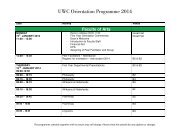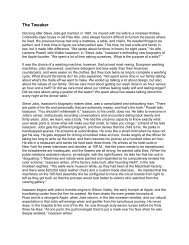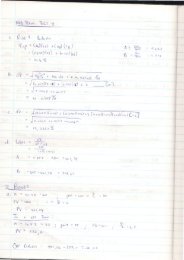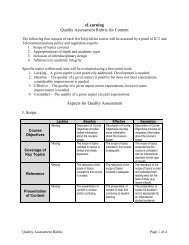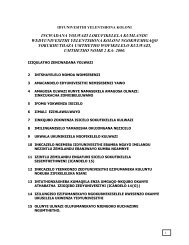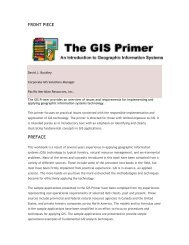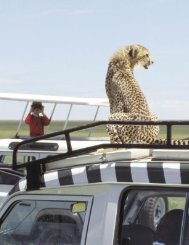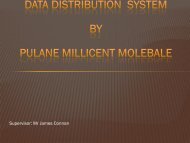Ecosystem Guidelines for Environmental Assessment
Ecosystem Guidelines for Environmental Assessment
Ecosystem Guidelines for Environmental Assessment
Create successful ePaper yourself
Turn your PDF publications into a flip-book with our unique Google optimized e-Paper software.
MAINLAND THICKET<br />
appear to recover naturally, and are invaded<br />
by exotic species or other non-thicket<br />
species.<br />
Over-grazing and wild fires in hot, dry<br />
conditions hold a significant threat to thicket.<br />
Although thicket is essentially a fire-proof<br />
vegetation, overgrazing of the succulent<br />
component results in the system being open<br />
to the invasion of shrubs and C4 grasses.<br />
Such areas may then become flammable,<br />
allowing fires to penetrate vegetation that<br />
otherwise never would have been exposed to<br />
fire in recent times. This can result in the<br />
elimination of many fire-intolerant thicket<br />
plants. Fires can also penetrate into Thicket<br />
and Valley Thicket in some situations, such<br />
Mosaic thicket depends on maintaining a fine balance<br />
as when areas are cleared <strong>for</strong> stock grazing.<br />
between grazing and fire.<br />
The occurrence of alien invasive acacias in<br />
fynbos increases the likelihood of fire<br />
penetrating thicket vegetation at the fynbos/thicket boundary.<br />
The loss of connectivity of thicket patches affects ecosystem function. Historically, thicket was more<br />
connected than it is now. Trans<strong>for</strong>mation has resulted in a fragmented pattern that reduces resilience<br />
to environmental change and causes isolation of gene pools and the loss of gene flow within and<br />
between patches. Isolation due to human-induced fragmentation may result in some species losing<br />
their adaptive potential, increasing the risk of species or varieties becoming extinct.<br />
Game fences prevent some animal and plant species from migrating, and may ultimately threaten<br />
their survival. The introduction of non-indigenous game also presents a threat to thicket vegetation.<br />
Due to historical trans<strong>for</strong>mation of adjacent, non-thicket habitat such as Coast Renosterveld or Dune<br />
Thicket may provide the only connectivity between Mainland Thicket types that occur in inland-trending<br />
valleys. Coastal development threatens to sever these surviving linkages.<br />
JAN VLOK<br />
What are the “bottom lines” and non-negotiables<br />
Avoid over-grazing in Valley or Arid Thicket - otherwise the system will disappear.<br />
Avoid the introduction of extra-limital, non-thicket game species.<br />
Avoid severing or fragmenting patches of intact thicket. Where this has occurred, set aside corridor<br />
areas to reconnect the patches.<br />
Avoid transitional or boundary areas where thicket abuts or <strong>for</strong>ms mosaics with vegetation<br />
associated with the adjacent biome. Such areas accommodate the highest levels of biodiversity and<br />
require special conservation measures.<br />
Many of the mosaic thicket vegetation types are maintained by a fine balance between specific fire<br />
and grazing regimes. Retain appropriate grazer-browser ratios in game species as well as the required<br />
fire regime.<br />
Avoid disturbance to riparian areas or steep slopes and valleys where thicket vegetation is present.<br />
Avoid disturbance to rocky outcrops, geological/soil type boundaries and islands where thicket<br />
vegetation is present.<br />
Never underestimate the restoration potential and importance of thicket in areas where it used to occur.<br />
64 : MAINLAND THICKET ECOSYSTEMS



